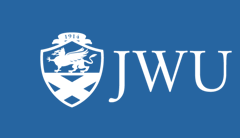To download dissertations and theses, please click on the appropriate "Download" button for your campus to log in and be e-verified. When you reach the "Sign into your JWU email" page, enter your JWU username and password.
Non-JWU users: Please talk to your librarian about requesting this dissertation through interlibrary loan.
Student transition to four-year institutions: Faculty, staff, and administrator perceptions of articulation processes
Abstract
The open admissions policies of community colleges serve to remove barriers for students aspiring to a college education (Mosholder & Zirkle, 2007), provide an affordable opportunity to attend college (Mullin & Honeyman, 2008; Zinser & Hanssen, 2006), and increase underrepresented student population enrollments at four-year institutions (Allen, Robbins, Casillas, & Oh, 2008). Community college transfer students face unique challenges in their transition compared with other transfer students (Falconetti, 2009a). As Eggleston and Laanan (2001) noted, "abundant research has been conducted regarding community college transfer students in conjunction with their academic performance, baccalaureate attainment, and persistence at the four year college level," but a gap exists as "a limited amount of research has been done to study the transfer student's adjustment process, once he or she has reached the senior institution" (p. 87). The purpose of this study was to explore faculty, staff, and administrator perceptions of institutional support regarding student transition from articulation to four-year institutions. The research question guiding this study was: How do faculty, staff, and administrators perceive institutional support regarding community college student transition to a four-year institution? This qualitative, descriptive study utilized face-to-face interviews as the primary data collection strategy. Nine faculty, staff, and administrators (N=9) working with and influencing programming for students going from articulation through first semester in a bachelor's program were invited to participate. Participants were interviewed until data saturation was achieved. Once themes emerged, data informed secondary data collection utilizing a reflective questionnaire with the same nine (N=9) participants. Evaluation coding (Saldana, 2009) and logical analysis (Patton, 2002) were utilized to analyze data. Documents related to the transition process were analyzed in order to triangulate and add rigor to findings. Findings included insights regarding shared characteristics of successful students; transition challenges; students not utilizing institutional support; and organizational structure implicating student transition. This study sought to add to the body of knowledge regarding institutional support available for community college transfer students in order to potentially inform decisions regarding how institutions can better serve this student population. These results may assist them in their adjustment, the four-year institutions, and the workforce.
Subject Area
Educational leadership|Higher education
Recommended Citation
Apicerno, Amy, "Student transition to four-year institutions: Faculty, staff, and administrator perceptions of articulation processes" (2013). Dissertation & Theses Collection. AAI3608059.
https://scholarsarchive.jwu.edu/dissertations/AAI3608059

